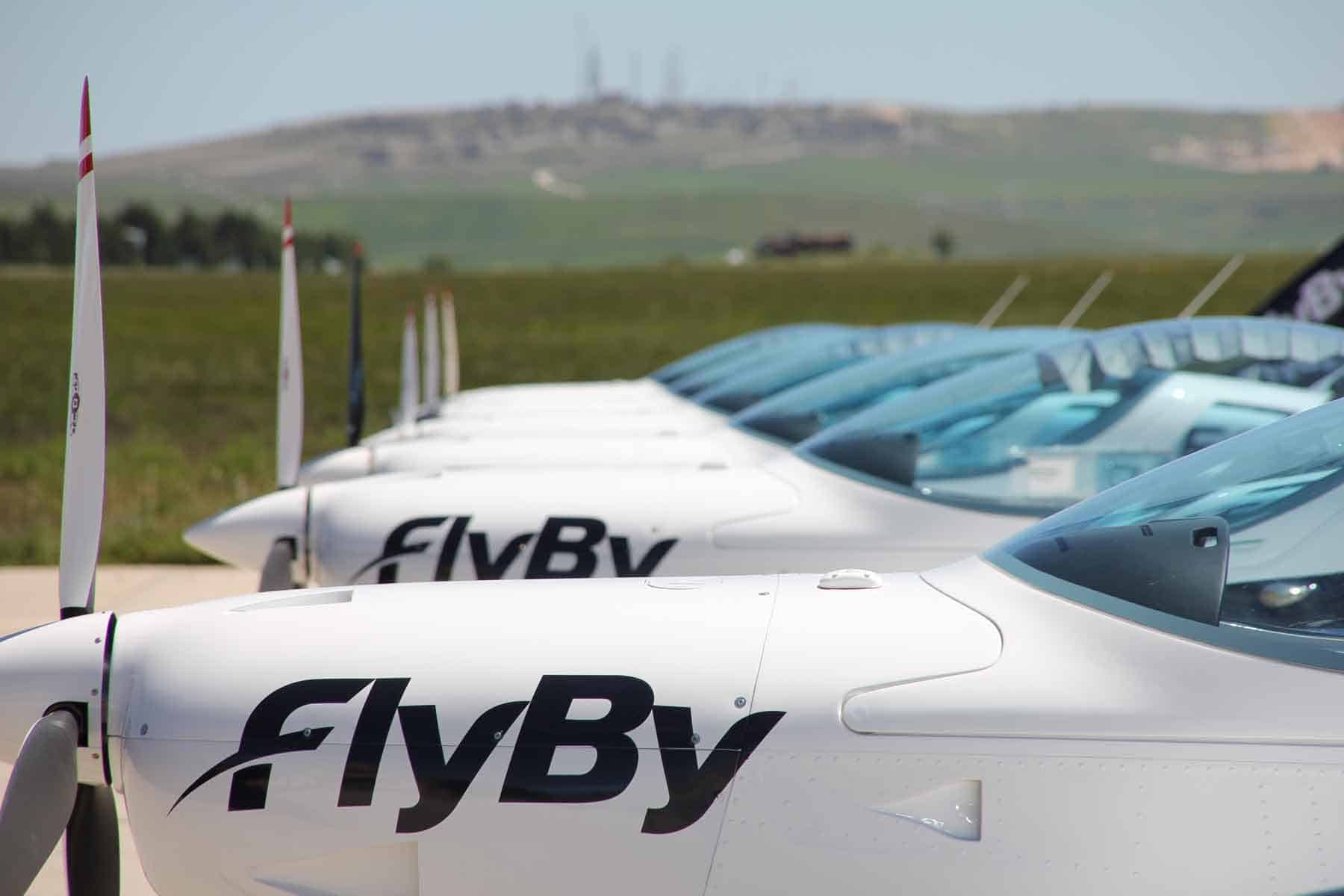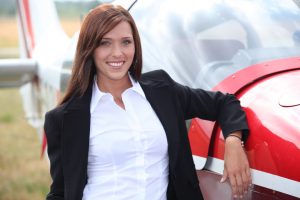A career in aviation can be rewarding, with commercial pilots enjoying high salaries, flexible schedules and the ability to see the world. There are many schools across the globe that offer commercial pilot training, and in a few short months, you can be well on your way to becoming a pilot. It can be a challenge to find the right pilot school in the right location, so understanding what it takes to become a pilot is the first step in taking to the skies.
The Pilot Training Process
The first step toward becoming licensed to fly a commercial jet is to get a private pilot license (PPL). This training starts off with a single engine piston engine, and teaches the fundamentals of aerodynamics, navigation, maneuvers and take off and landing. This is the foundation for the commercial license, and is required of all new pilots in training. This training typically takes about three to six months, depending on weather conditions, student availability and scheduling. In some cases, it can take up to a year or longer to complete the training and receive the license. Because weather plays a large part of how often a student pilot is able to train and practice, completing your training in a good weather area makes all the difference in the time it takes to get licensed.

A pilot must meet certain qualifications in order to get the license. First, they must be at least 18 years of age in order to start training. They must be able to speak, read and write English and be in good health. They must get a 2nd class medical certificate that ensures they are physically and mentally fit to fly. This test measures your vision, hearing, balance, heart health and any other conditions that can impede your ability to fly an aircraft safely. For those who want to become a commercial pilot, they will need a class 1 medical certification.
The medical certificate is valid for between two and five years, depending on your age.
After completing the initial training and medical certification, pilots will need to spend around 45 hours in flight before they are granted the private pilot’s license in the United States and that will vary from jurisdiction to jurisdiction. After passing the initial training for the license, you will be required to take and pass the FAA (Federal Aviation Administration) exam in the US, EASA (European Aviation Safety Agency) exam in Europe, or other pertinent regulatory body before applying for a PPL.
After that you will need additional training and hours to get your commercial pilot’s license, instrument rating, and other certifications you will need to get all the certifications you need to fly with a major airline carrier. A modular training program generally follows the process of getting a prospective pilot each of these certifications piecemeal until you accumulated all the qualifications to fly with a major carrier.
A much better approach is to start with an ATPL integrated training program at a commercial flight school. You can start one of these programs without a PPL or ever having flown before and they will put you on the most efficient path to acquiring all the certifications you need to become a pilot. It is a more intense route of study, but it is one that will greatly accelerate your progression to becoming a pilot and be much more efficient from a cost perspective.
Where to Train to Become a Pilot
Deciding where to train to become a pilot is one of the most important factors when it comes to the time and cost of your training. While pilots are trained to fly in all kinds of weather, the majority of your training will be heavily dependent on clear skies. In the United States, this can limit you to certain regions of the country for your flight training. If you happen to live in an area where there is frequent heavy rain, snow or other inclement weather, it can lengthen the time and cost that it takes to receive your license.
Many aspiring pilots choose to train in Northern Spain for this reason alone. Northern Spain is known for its long streaks of sunny days and mild weather, making it an ideal location for pilot training. Pilots who train in Northern Spain often find that they can enjoy more time in the air, and with an aggressive schedule, finish their training in about 14 months. Northern Spain has a low cost of living, and pilot schools are often more affordable than those in the United States and Canada. In addition, the European Union requires fewer flight hours of training than in the United States, so pilots can get their European licenses quicker and with less expense. European pilot’s licenses are valid all over the world, and you can transfer it to your home country after your training is complete once you complete any additional hours you might need for certification. It is much better to have a European airline pay you to complete the remainder of the massive 1,500 flight hours the FAA requires than to pick up the cost at a flight school on your own dime!
During these 14 months of training, you will be studying alongside experienced pilots and other students. You will receive one-on-one help, ongoing support and guidance. At the end of your training, you will be ready to start work as a commercial airline pilot.
One of the biggest benefits of training in Northern Spain is cost. In the United States, a full commercial airline pilot training course can cost up to $120,000 USD. In order to pay for this, some student pilots continue to work full time jobs while also training for their licenses. Others train for a few months, take a break to work for a few months, then re-start. These interruptions in the training can make completing the course more difficult. Taking frequent breaks due to cost means that student pilots may lose certain skills and have to re-take tests or practice the same skills repeatedly. All of this slows down the process and makes it more costly.
Choosing a fully ATPL integrated course such as FlyBy’s In Spain, however, allows cost to be much lower, making it easier for students to pay for and complete the entire course in one shot. Students can immerse themselves in the course without taking frequent breaks, allowing them to retain the information, get the required flight hours and pass the course quickly.
The training includes several major parts. The ground exams, often described as the most demanding portion of the training cover navigation, weather and aviation law. Night qualification instructs you on how to fly using your instruments, and not the horizon, as a guide. Multi-engine rating training prepares you to fly planes with more than one engine as is the case with commercial jetliners, while instrument rating is a demanding section that prepares you to fly using only your instrument panel. Finally, multi-crew cooperation training teaches you to work closely with your flight crew to ensure the safe operation of the flight. Each one of these modules is taught separately and rigorously to ensure that you have full and complete knowledge and competency before getting into the cockpit.
Careers as a Commercial Airline Pilot
There are many careers available to newly-licensed pilots, and there is increasing demand for them around the world. Up until recently, Internet competition for low priced flights had increased traveler demand, and many new airlines are cropping up daily. These airlines are always searching for new pilots, so it can be easy to quickly find work as a commercial airline pilot. Boeing’s Pilot and Technician Outlook survey predicts that in the next 20 years, the aviation industry will need 790,000 new airline pilots.
Many commercial airline pilots go straight for jobs with the major airlines, but there are other jobs available that are lucrative and rewarding. For pilots who want to deliver the knowledge already gained, working as a flight instructor pilot is a great way to use your new commercial airline pilot’s license. For others, small aircraft flight charters are ideal. Many work closely with cruise lines and luxury tour operators.
If you are looking to start your pilot training, there is no time better than now to get started. Training in Northern Spain will give you an excellent canvas of clear skies and affordability to make getting your pilot’s license a breeze. Finding a good school such as FlyBy Burgos will help you to get the training you need to get started in this rewarding and high-flying career.
To learn more about our ATPL integrated program where you can get your EASA certification in as little as 14 months for only 69,300 EUR contact us today.
Source: https://flybyschool.com/best-place-to-get-commercial-pilots-license/
from WordPress https://flybyaviationacademy.wordpress.com/2020/11/28/the-best-place-to-get-your-commercial-pilots-license/


